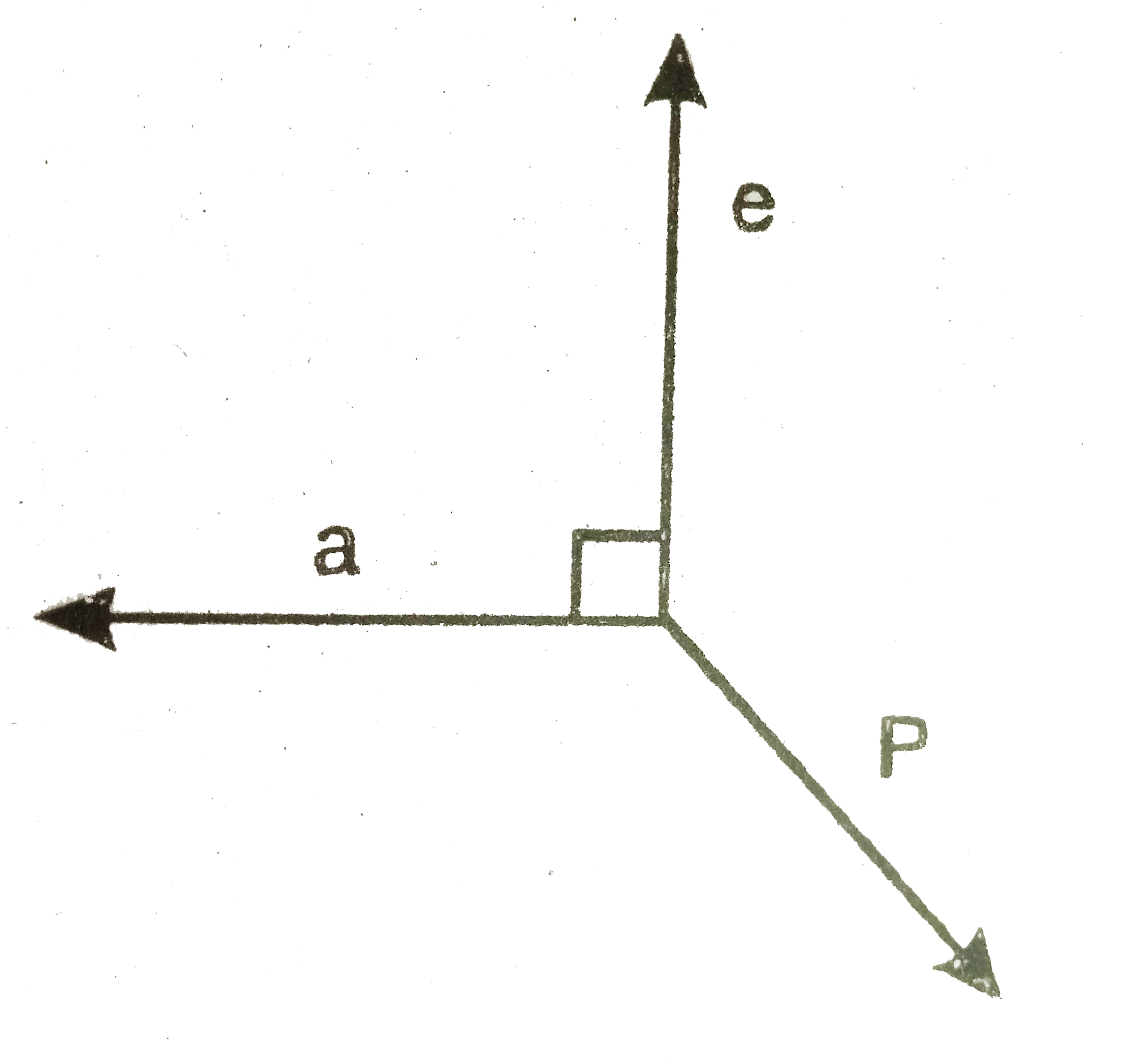A neutron initially at rest, decays into a proton, an electron and an antineutrino. The ejected electron has a momentum of 1.4×10−26 kg-m/s and that of antineutrino 6.4×10−27 kg-m/s. Find the recoil speed of the proton a. if the electron and the antineutrino are ejected along the same direction and b. if they are ejected along perpendicular directions. Mass of the proton 1.67×10−27kg.Solution in Tamil
Mass of proton =1.67×10−27kg
LetVP be the velocity of proton. Given, moment of electron
=1.4×10−26kgmsec
and momentum of antineutrino
=6.4×10−27kgmsec

a. The electron and the antineutrino are ejected in the same direction.
As the total momentum is conserved the proton shoud be ejected in the opposite direction.
1.67×10−27×VP
=1.4×10−26+6.4×10−27
=20.4×10−27
∴VP=(20.41.67)
=12.2msec in the opposite direction.
b. the electron and ntineutrino are ejected perpendicular to each other.
Total momentum of electron and antineutrino
=√(14)2+(6.4)2×10−27kgms
→VP=15.4×10−27kg−msec1.67×10−27kg
∴VP=9.2ms
Topper's Solved these Questions
Similar Questions
The centre of mass of a system of particles is at the origin. It follows that:
02:08View SolutionAn aluminium vessel of mass 0.5kg contains 0.2kg of water at 20∘C A block of iron of mass 0.2kgat100∘C is gently put into the water .Find the equilibrium temperature of the mixture, Specific heat capacities of aluminium , iron and water are 910Jkg−1K−1470Jkg−1K−1and4200Jkg−1K−1 respectively
02:40View SolutionFind the accelerationof the moon with respect to the eath from the following data, Distance between the earth and the moon =3.85×105 km and the time taken by the moon to complete one revolution around the earth =27.3days
05:29View SolutionCalculate the equivalent energy of electrons and proton at rest. Given that mass of electron =9.1xx10^(-31)kg and mass of proton =1.673xx10^(-27)kg .
04:12View SolutionCalculate the ratio between the wavelength of an electron and a proton, if the proton is moving at half the velocity of the electron (mass of the proton =1.67xx10^(-27)kg , mass of the electron =9.11xx10^(-2)m .
04:51View SolutionIn β−1 decay, a (A) neutron coverts into a proton emitting antineutrino (B) neutron coverts into a proton emitting neutrino (C) proton coverts into a neutron emitting antineutrino (D) proton coverts into a neutron emitting neutrino
04:23View Solutionयह माना की एक न्युट्रान, एक प्रोटान तथा एक इलेक्ट्रान में टूटता है! इस प्रक्रिया में निर्गत ऊर्जा है: (न्युट्रान का द्रव्यमान =1.675×10−27 किग्रा, प्रोटान का द्रव्यमान =1.6735×10−27 किग्रा, इलेक्ट्रान का द्रव्यमान =9×10−31 किग्रा)
01:50View Solutionप्रारंभ में विरामावस्था में स्थित एक न्यूट्रॉन विखंडित होकर एक प्रोटॉन, एक इलेक्ट्रॉन एवं एक antineutrino उत्सर्जित करता है। उत्सर्जित इलेक्ट्रॉन का संवेग 1.4×10−26kgm/s तथा का संवेग 6.4×10−27kg m/s है। प्रोटॉन की चाल ज्ञात कीजिए यदि
वे परस्पर लंबवत दिशा में चलते हैं। प्रोटॉन का द्रव्यमान =1.67×10−27kg kg.06:10View SolutionThe rest mass of a proton is 1.67×10−27 kg. the kinetic energy of proton when it moves with a speed of 2.1×108 m/s is
04:12View SolutionIf a mass of a proton is 1.67×10−27kg, how many protons will be present in 1 kg?
Given data:
Mass of a proton =1.67×10−27kg
1.67×10−27kg is mass of 1 proton.03:06View SolutionA neutron intially at rest, decays into a proton, an electron and an antineutrio. The ejected electron has a momentum of p1=1.4×10−28 kg-m/s and the antineutrino p2=6.5×10–27 kg-m/s. Find the recoil speed of the proton
if the electron and the antineutrino are ejected along the the same direection.02:12View Solutionयह मान ले कि एक न्यूट्रॉन, एक प्रोटॉन और एक इलेक्ट्रॉन में टूटता है। इस प्रक्रिया में निर्गत ऊर्जा है
(न्यूट्रॉन का द्रव्यमान =1.6725×10−27 किग्रा, प्रोटॉन का द्रव्यमान =1.6725×10−27 किग्रा, इलेक्ट्रॉन का द्रव्यमान =9×10−31 किग्रा)View SolutionIn beta^(-1) decay, a (A) neutron coverts into a proton emitting antineutrino (B) neutron coverts into a proton emitting neutrino (C) proton coverts into a neutron emitting antineutrino (D) proton coverts into a neutron emitting neutrino
02:03View SolutionAssertion: Free Neutron decays into proton, electron and antineutrino
Reason : Neutron is unstable outside the nucleusView SolutionAssume that a neutron breaks into a proton and an electron. The energy released during this process is : (Mass of neutron=1.6725×10−27 kg , Mass of proton = 1.6725×10−27 kg , Mass of electron = 9×10−31 kg)
View SolutionHow many electrons (mass 9.1xx10^-31 kg) would balance one Proton (mass 1.67xx10^-27 kg)
04:07View Solution

